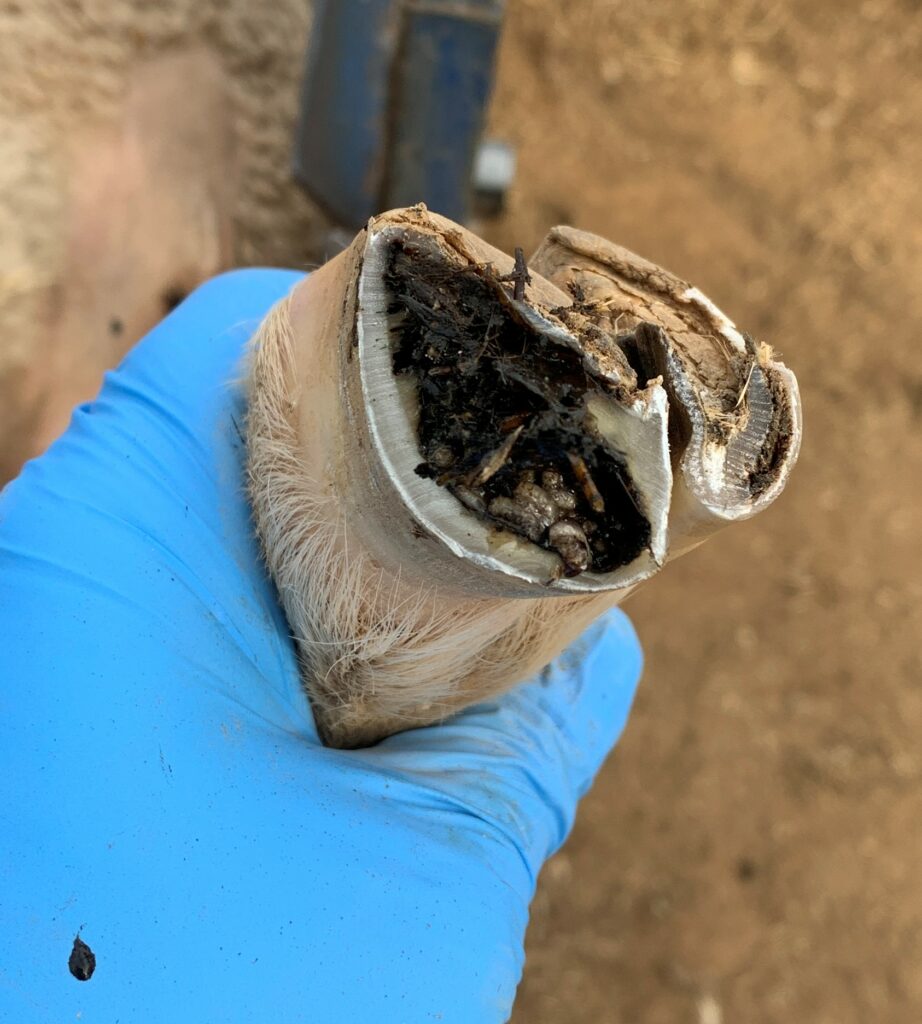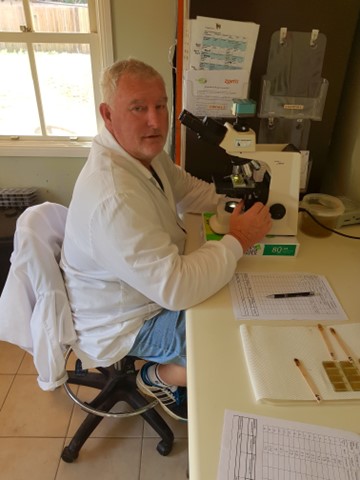August seasonal focus
Goats- using regional worm control programs for healthy goats and sustainable properties Goat producers have a lot of tools to manage worm burden in their herds. However, the treatment tools […]
 Tools
Tools
Subscribe now to receive email updates from one or more of our ParaBoss suite of websites, ParaBoss, FlyBoss, LiceBoss and WormBoss.
SubscribeSeasonal conditions have been variable since our last seasonal focus, and there has been a strong turn around for many. Others are not so lucky to have received sufficient rainfall as evident in the January rainfall decile chart from the Bureau of Meteorology.
What this may mean for some is that the parasites have kicked off significantly in flocks and herds, and our team have certainly been hearing stories to this effect, with worms of all species having a party in some areas, whilst other areas have the ‘usual suspects’ giving them an expected headache, and other areas being surprised by what’s out there.
A key way to ensure that your management stays ahead of the worms is to ‘test – don’t guess!’ so you know exactly what you are dealing with and can take the most appropriate action. Worm egg counts and larval differentiations allows you to know what’s there and to what extent (how many).
In those areas where it’s been raining often, don’t mistake the scouring in your livestock for wet feed or worms – find out for sure if its worms or not!
Similarly, the bush and paralysis tick situation is favoured by moist conditions, and there have been many areas affected by tick population explosions. The key point here is to monitor, and treat at the appropriate time, with the right product. Consider when treating ticks what other parasites might be receiving a dose of the product, and if this will be effective, or contributing to future chemical resistance issues.
TickBoss has some very useful information about choosing wisely which chemicals to use to control ticks, and minimising chemical resistance in ticks and other parasites. Click here to check it out.
Goat herds will benefit from providing access to browse during wetter conditions – to decrease the intake of worms from feed close to the ground, where all the larvae hang out.
Use the opportunity to spell some of your pastures – any time will be of benefit to your goats and future management ease. The time to spell pastures varies considerably, depending on temperature, species of worm present, as well as rainfall, so there are no actual hard and fast rules that we can state that apply to all. (the good old ‘it depends’ phrase applies here!)
This link will take you straight to the information about the impacts of effective grazing management on worm control in goats:
This link covers all you need to know about the role and benefit of browse in controlling worms in goats.

Reports recently from Victoria where they are experiencing wet summer conditions. Sheep with footrot are suffering blowfly strike in the foot. Sheep are lame, don’t thrive, look sick and spend a lot of time lying down (despite damp conditions underfoot). This occurs in footrot, but may also happen with toe abscess and foot abscess. Close examination revealed maggots invading the footrot wounds.
Contact a sheep veterinarian to diagnose the condition, as options vary for the different foot conditions. It is also essential to differentiate virulent from benign footrot.
Sheep blowfly issues have re-ignited with the rain in those areas where its been falling. Check out the FlyBoss tools that have been developed that will help you:
Click here to see the FlyBoss tools.
We spoke to Phil Stein, Laboratory Manager at Dawbuts, Camden NSW about the trends he’s seeing in sheep and cattle worms so far in 2024.

“We get a lot of sheep samples from southern NSW. The season has been very good for worms, with consistent rain coming through right from early summer. In general, sheep producers in the Monaro are handling the conditions pretty well. The average of a few dozen tests in that region have been reasonable for this time of year. A lot of producers in that area monitor over summer, so they don’t get any surprises.
Further west and north from there, worm egg counts are all over the place. Some mobs are quite low, despite not drenching since August, while others are very high. One high count was from a mob with average of 2,800 epg from a property in the eastern Riverina. Another high one from the southern slopes had a mob average of 5,000 epg. You might be able to put the difference down to paddock management and drench choice. Another clue is that properties using Barbervax have generally got lower mob average worm egg counts at this time of year.
In northern NSW, the highest mob average in the first 2 weeks of January was 2,300 eggs per gram from a property in the Central West and again it was high levels of barber’s pole worm (91%). Not many tests from Queensland so far, but they top out at 1,550 eggs per gram with mostly barber’s pole worms.
In South Australia, properties in the southeast are doing a lot of monitoring, and are generally keeping their worm egg counts reasonably low. Highest mob count was 1,187 epg, with mixed worm infections. One concern in that state is the thin-necked intestinal worm which showed up in reasonable numbers in a few lamb mobs. We’re seeing a lot of them also in southern NSW, with the top average mob count of 313 epg. Over the past 2 years we’ve detected some thin-necked intestinal worms that are surviving drenching with white drenches (benzimidazoles) so they may be getting harder to manage.
The larval differentiation results for sheep have been dominated by barber’s pole worms. They range from a low of 68% to a high of 100%, with brown stomach worm and black scour worm making up most of the rest. This is typical of the last few years with wet summers.
We’ve done a few cattle tests as well. The highest mob average was 250 eggs per gram from a mob of heifers from Tasmania, but the highest individual count in that mob was over 1,000 eggs per gram, so they will really benefit from an effective treatment. In central Queensland two mobs of 14m old crossbred steers had averages of 116 and 133, epg but a high of over 600 epg, so a combination drench would go down well there too. We saw very similar counts from cattle in central west of NSW.”

Cattle producers in Queensland, the Northern Territory and northwest Western Australia are warned to keep a close eye out for cattle ticks in the ‘Tick Declared Zone’. This follows widespread rain and warm conditions creating ideal conditions for cattle ticks to spread. The seasonal conditions are similar to what occurred in 2022, when at least 149 cases were recorded of cattle tick incursions across the tick line into the ‘Tick Declared Zone’ in Queensland alone.
Spread of cattle ticks is compounded by feral deer which happily carry the ticks over the tick line into ‘tick-free’ country. Another factor is resistance to some common tickicides, which is common in Queensland. Cattle producers are urged to test ticks on their property to check their resistance status. Details on tick testing can be found on TickBoss.
ABC Rural reporter Josh Becker has reported on cases of theileriosis causing cattle deaths on the NSW south coast during January 2024. This blood disease causes anaemia and is spread by bush ticks. If you suspect cattle have theileriosis, call your local vet or LLS veterinary officer for a visit to diagnose and provide advice.
1. ParaBoss theileriosis webinar
2. ParaBoss article that covers updates on theileriosis in cattle
Goats- using regional worm control programs for healthy goats and sustainable properties Goat producers have a lot of tools to manage worm burden in their herds. However, the treatment tools […]
Clean pastures. Keeping sheep, goats and cattle healthy relies on minimising the amount of worm larvae they pick up from the grass. At this time of year, it is a […]
As the winter months are now upon us, a timely reminder to be on the look-out for some of our usual suspects, and also proactively manage to maintain smooth sailing […]
www.wecqa.com.au is a secondary ParaBoss website hosted by the University of New England (UNE). Whilst this is still an official ParaBoss website, UNE is solely responsible for the website’s branding, content, offerings, and level of security. Please refer to the website’s posted Privacy Policy and Terms of Use.